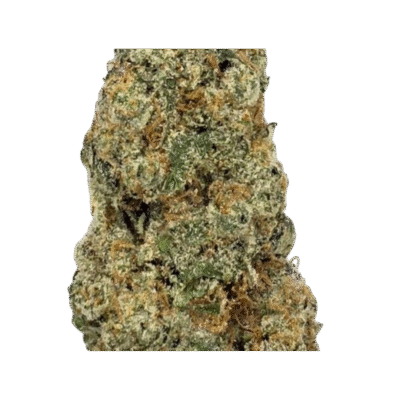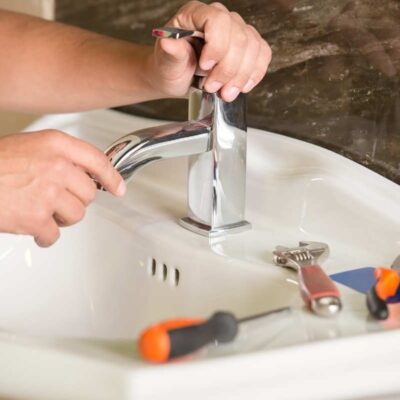Introduction
The Fast-Moving Consumer Goods (FMCG) sector is one of the most competitive and dynamic industries in the world. From everyday essentials like toothpaste, soap, and packaged foods to beverages and cleaning products, FMCG brands reach billions of consumers daily. What sets this industry apart is its high volume, low margin nature, which makes scale and brand loyalty critical for long-term success.
In today’s digital-first world, traditional marketing alone is not enough to sustain growth. Consumers are no longer influenced solely by in-store promotions, print ads, or television commercials. They are discovering, engaging with, and purchasing products online. This is where digital marketing for FMCG becomes an indispensable tool.
Digital platforms allow brands to connect directly with customers, build long-term loyalty, and stand out in a crowded market. By using targeted campaigns, personalized content, and e-commerce integrations, FMCG companies can significantly increase sales while reducing marketing costs.
This blog explores the top digital marketing strategies for FMCG brands to boost sales in 2025 and beyond.
Understanding the FMCG Landscape in the Digital Era
The FMCG industry has always been customer-driven. However, in the past decade, digital adoption has dramatically reshaped consumer expectations and purchasing habits.
-
Changing Consumer Behavior:
-
Today’s buyers are more informed. They compare brands, read online reviews, and expect instant gratification.
-
Instead of depending solely on retail stores, customers are using e-commerce platforms, mobile apps, and social media to purchase FMCG products.
-
-
Rise of Online Shopping for FMCG:
-
A growing number of households prefer ordering groceries, snacks, and household items online for convenience.
-
Platforms like Amazon, BigBasket, and Blinkit are making FMCG products more accessible.
-
-
Impact on Traditional Retail:
-
Traditional mom-and-pop stores still dominate in many markets, especially in developing countries.
-
However, digital promotions are influencing what customers demand at these stores.
-
The digital era has blurred the lines between offline and online retail, making it vital for FMCG brands to adopt integrated digital strategies to reach customers at every touchpoint.
Why Digital Marketing for FMCG is Essential
The FMCG industry faces intense competition, with hundreds of brands vying for consumer attention. To survive and thrive, companies need to stand out in this crowded marketplace.
-
Highly Competitive Market:
-
With low switching costs, customers often move to competitors offering discounts, promotions, or better experiences.
-
-
Shifting Brand Loyalty:
-
Unlike luxury products, FMCG items are frequently purchased. This makes consumers more likely to try alternatives.
-
Digital marketing helps build consistent engagement, encouraging repeat purchases.
-
-
Data-Driven Insights:
-
Digital marketing provides real-time data on consumer behavior.
-
This helps brands design more effective campaigns and allocate budgets efficiently.
-
In short, Digital Marketing for FMCG is not just a trend but a necessity for long-term growth.
Top Digital Marketing Strategies for FMCG Brands
Now let’s dive into the strategies FMCG brands can use to boost sales and grow in a digital-first environment.
1. Social Media Marketing
Social media is the most powerful tool for FMCG marketing because it offers direct engagement with customers.
-
Platforms like Instagram, Facebook, and TikTok allow brands to showcase products in creative ways.
-
FMCG products lend themselves to visual storytelling (recipes, beauty tips, cleaning hacks, etc.).
-
Interactive content like polls, reels, and contests encourages consumer participation.
Example: Oreo’s playful Instagram campaigns and Coca-Cola’s “Share a Coke” campaign built strong emotional connections with customers.
2. Influencer Marketing
Influencers have become modern-day brand ambassadors. FMCG companies can leverage micro and macro influencers to promote products.
-
Micro-influencers (with 10k–100k followers) create authentic connections.
-
Macro-influencers and celebrities provide mass visibility.
-
Influencers help FMCG brands reach niche markets, especially in health, fitness, food, and lifestyle categories.
Example: Nestlé partnered with fitness influencers to promote its healthy breakfast cereals.
3. Search Engine Optimization (SEO)
Organic visibility on search engines is critical for FMCG growth.
-
Optimizing for keywords like “best toothpaste for sensitive teeth” helps capture intent-driven buyers.
-
Content like blogs, recipes, and guides drives traffic and brand awareness.
-
Local SEO ensures visibility on “near me” searches (e.g., “buy detergent near me”).
By ranking high in search results, FMCG brands can attract loyal customers without relying solely on paid ads.
4. Content Marketing & Storytelling
Content builds trust and authority. FMCG brands can use blogs, videos, and social posts to educate and entertain.
-
Food brands share recipes and nutrition guides.
-
Beauty brands provide skincare routines.
-
Cleaning brands publish household tips.
Storytelling also creates an emotional bond. Dove’s “Real Beauty” campaign is a prime example of storytelling that goes beyond product promotion.
5. Video Marketing & Short-Form Content
Video consumption is at an all-time high, especially with platforms like YouTube Shorts, TikTok, and Instagram Reels.
-
Product demos explain usage and benefits.
-
Behind-the-scenes videos humanize the brand.
-
User-generated content builds credibility.
Example: Pepsi’s engaging ad campaigns have leveraged short-form content to target younger audiences effectively.
6. E-commerce Partnerships & Marketplaces
FMCG brands must partner with online marketplaces to expand reach.
-
Amazon, Flipkart, BigBasket, and Blinkit provide ready-made distribution networks.
-
FMCG brands can launch exclusive online products to attract digital customers.
-
Retail partnerships also enable better visibility through sponsored listings.
7. Paid Advertising (Google Ads, Social Ads, Programmatic)
Paid campaigns allow precise targeting.
-
Google Ads capture intent-based searches.
-
Social media ads target demographics and interests.
-
Programmatic advertising automates ad placements for maximum efficiency.
Example: Unilever runs localized ad campaigns that target specific consumer groups based on location and preferences.
8. Email & WhatsApp Marketing
Direct communication channels help build loyalty.
-
Email newsletters deliver recipes, tips, and promotions.
-
WhatsApp marketing is ideal for flash sales and personalized offers.
-
Brands can create segmented campaigns for better engagement.
9. Mobile App Engagement & Push Notifications
Apps like loyalty platforms or shopping assistants enhance customer retention.
-
Push notifications remind customers of reorders.
-
Personalized offers drive repeat sales.
-
Apps can also include gamified features like scratch cards and discounts.
10. Customer Loyalty Programs & Gamification
FMCG brands thrive on repeat purchases. Loyalty programs ensure customers return.
-
Points-based rewards encourage repeated buying.
-
Gamification techniques like “spin the wheel” create excitement.
-
Exclusive benefits for loyal customers strengthen brand preference.
Role of Data & Analytics in FMCG Digital Marketing
Data is the backbone of digital strategies. By tracking consumer interactions, brands can refine campaigns.
-
Consumer Insights: Understand buying patterns and preferences.
-
Predictive Analytics: Anticipate demand spikes for better inventory planning.
-
Campaign ROI: Measure the effectiveness of digital campaigns.
Example: Coca-Cola uses AI to analyze data and create personalized marketing campaigns for different customer groups.
Leveraging Technology for FMCG Marketing
Technology enables FMCG companies to create personalized, immersive experiences.
-
AI & Machine Learning: Predict consumer needs, recommend products, and automate campaigns.
-
Chatbots & Virtual Assistants: Provide 24/7 customer support.
-
AR/VR Experiences: Allow customers to visualize products before purchase (e.g., furniture cleaning sprays or cosmetics).
Case Studies of Successful FMCG Digital Campaigns
-
Coca-Cola’s “Share a Coke” Campaign – Personalized bottles increased customer engagement.
-
Dove’s Real Beauty Campaign – Powerful storytelling created global conversations.
-
Nestlé’s Recipe Content Strategy – Generated massive online traffic and loyalty.
-
ITC’s Digital Push During COVID-19 – Partnered with delivery platforms to meet rising demand.
-
Pepsi’s Short-Form Ads on TikTok – Captured younger audiences effectively.
Challenges FMCG Brands Face in Digital Marketing
-
Intense Competition – Too many brands chasing the same audience.
-
Maintaining Authenticity – Over-marketing can damage brand trust.
-
Balancing Online & Offline Presence – Traditional retail still matters in many regions.
-
Ad Fatigue – Consumers may ignore repetitive ads.
-
Data Privacy Concerns – Stricter regulations demand responsible marketing.
Future of Digital Marketing in FMCG
The future of FMCG marketing will be shaped by technology and consumer expectations.
-
Hyper-Personalization – AI-driven campaigns will tailor offers to individuals.
-
Sustainability Marketing – Eco-friendly products will dominate brand narratives.
-
Voice Search Optimization – FMCG brands must adapt to Alexa, Google Assistant, and Siri searches.
-
Integration of AI & AR – Virtual try-ons, personalized chatbots, and real-time offers will drive sales.
Conclusion
FMCG brands operate in a hyper-competitive world where customer attention is fleeting. To boost sales and retain customer loyalty, companies must embrace innovative strategies.
From social media and influencer marketing to AI-driven personalization and e-commerce partnerships, digital tools provide FMCG brands with limitless opportunities. The key lies in adapting quickly, engaging authentically, and delivering consistent value.
In short, digital marketing for FMCG is no longer optional—it’s essential for long-term success.
Frequently Asked Questions (FAQs) on Digital Marketing for FMCG
1. What is digital marketing for FMCG?
Digital marketing for FMCG refers to the use of online channels such as social media, search engines, e-commerce platforms, mobile apps, and digital advertising to promote and sell fast-moving consumer goods. Unlike traditional marketing, digital strategies allow brands to directly connect with consumers, personalize messages, and measure campaign effectiveness in real time.
2. Why is social media important for FMCG brands?
Social media plays a critical role in FMCG marketing because it provides direct interaction with customers. Platforms like Instagram, Facebook, and TikTok allow brands to showcase products, launch creative campaigns, and engage through polls, reels, and contests. It also helps brands stay top of mind in an industry where customer loyalty shifts quickly.
3. How can influencer marketing help FMCG companies?
Influencer marketing enables FMCG companies to leverage the trust and credibility of influencers. Micro-influencers create authentic, niche content that resonates with smaller audiences, while macro-influencers and celebrities provide wide exposure. For example, an FMCG food brand can partner with food bloggers to promote recipes using its products, boosting both visibility and trust.
4. What role does SEO play in FMCG marketing?
Search Engine Optimization (SEO) helps FMCG brands appear in search results when customers are actively looking for products. By optimizing product pages, blogs, and content with relevant keywords like “best detergent for tough stains” or “organic biscuits online,” brands can capture intent-driven traffic. Local SEO is also valuable for “near me” searches, helping FMCG brands increase footfall at physical stores.
5. Why is content marketing effective for FMCG?
Content marketing is powerful because it builds long-term relationships with consumers. Instead of simply selling, FMCG brands can educate and inspire through recipes, beauty tips, cleaning hacks, or wellness advice. This positions the brand as a trusted expert. For example, a skincare brand sharing daily routine tips increases customer trust and drives repeat purchases.
6. What type of videos work best for FMCG promotions?
Short, engaging, and visually appealing videos perform best for FMCG promotions. Examples include product demos, recipe tutorials, unboxing experiences, user-generated testimonials, and behind-the-scenes videos. Platforms like YouTube Shorts, TikTok, and Instagram Reels are ideal for capturing consumer attention in just a few seconds.
7. How do FMCG brands benefit from e-commerce partnerships?
E-commerce partnerships with platforms like Amazon, Flipkart, BigBasket, or Blinkit expand the reach of FMCG brands. These marketplaces provide ready-made logistics, visibility through sponsored listings, and opportunities for online-only promotions. In addition, FMCG companies can collect consumer data from e-commerce sales to improve future targeting.
8. Which paid ads are best for FMCG marketing?
The most effective paid ads for FMCG include:
-
Google Ads to capture high-intent searches.
-
Social Media Ads on Instagram, Facebook, and TikTok to build awareness.
-
Programmatic Ads for automated, targeted placements.
The choice depends on campaign goals. For awareness, social media works best; for sales, Google Ads and marketplace ads are highly effective.
9. Can WhatsApp marketing increase FMCG sales?
Yes. WhatsApp marketing is highly effective for FMCG brands because it provides direct, personalized communication with customers. Brands can share promotional offers, send reminders for reorders, and launch limited-time discounts. With high open rates compared to email, WhatsApp helps FMCG companies boost engagement and conversions quickly.
10. How do loyalty programs help FMCG brands?
Loyalty programs encourage repeat purchases by rewarding customers with points, discounts, or exclusive benefits. For FMCG products that are bought frequently (like snacks, personal care, or cleaning items), loyalty programs create habit-forming behaviors. Gamification, such as “spin the wheel” or scratch cards, can make the experience fun and engaging.
11. Why is data analytics critical for FMCG digital strategies?
Data analytics allows FMCG brands to understand consumer behavior, track preferences, and measure campaign success. By analyzing purchase history and browsing habits, brands can forecast demand, personalize offers, and reduce marketing wastage. For instance, predictive analytics can help an FMCG company anticipate seasonal spikes in demand for cold drinks or packaged foods.
12. How are AI and chatbots changing FMCG marketing?
Artificial Intelligence (AI) and chatbots provide personalized customer interactions at scale. AI algorithms recommend products based on browsing history, while chatbots offer instant answers to customer queries. For FMCG, AI can also predict reordering cycles, ensuring brands remind customers at the right time with push notifications or emails.
13. What challenges do FMCG brands face online?
Some common challenges include:
-
High competition and difficulty standing out.
-
Maintaining authenticity in influencer campaigns.
-
Balancing offline retail with online sales.
-
Ad fatigue from over-promotion.
-
Data privacy concerns due to stricter regulations.
Overcoming these challenges requires innovative, consumer-first strategies.
14. What is the future of FMCG digital marketing?
The future of FMCG digital marketing will be shaped by hyper-personalization, sustainability-driven campaigns, and new technologies. Voice search optimization will become critical as consumers use smart devices to shop. AI and AR/VR will create immersive product experiences, while eco-friendly and ethical branding will dominate consumer preferences.
15. How can FMCG brands balance offline and online sales channels?
Balancing online and offline sales is key for FMCG growth. Brands can use digital marketing to drive awareness and influence consumer demand, which then translates to offline purchases at local stores. At the same time, e-commerce partnerships and direct-to-consumer (D2C) platforms provide additional revenue streams. An integrated omnichannel strategy ensures customers can engage with the brand wherever they choose to shop.




